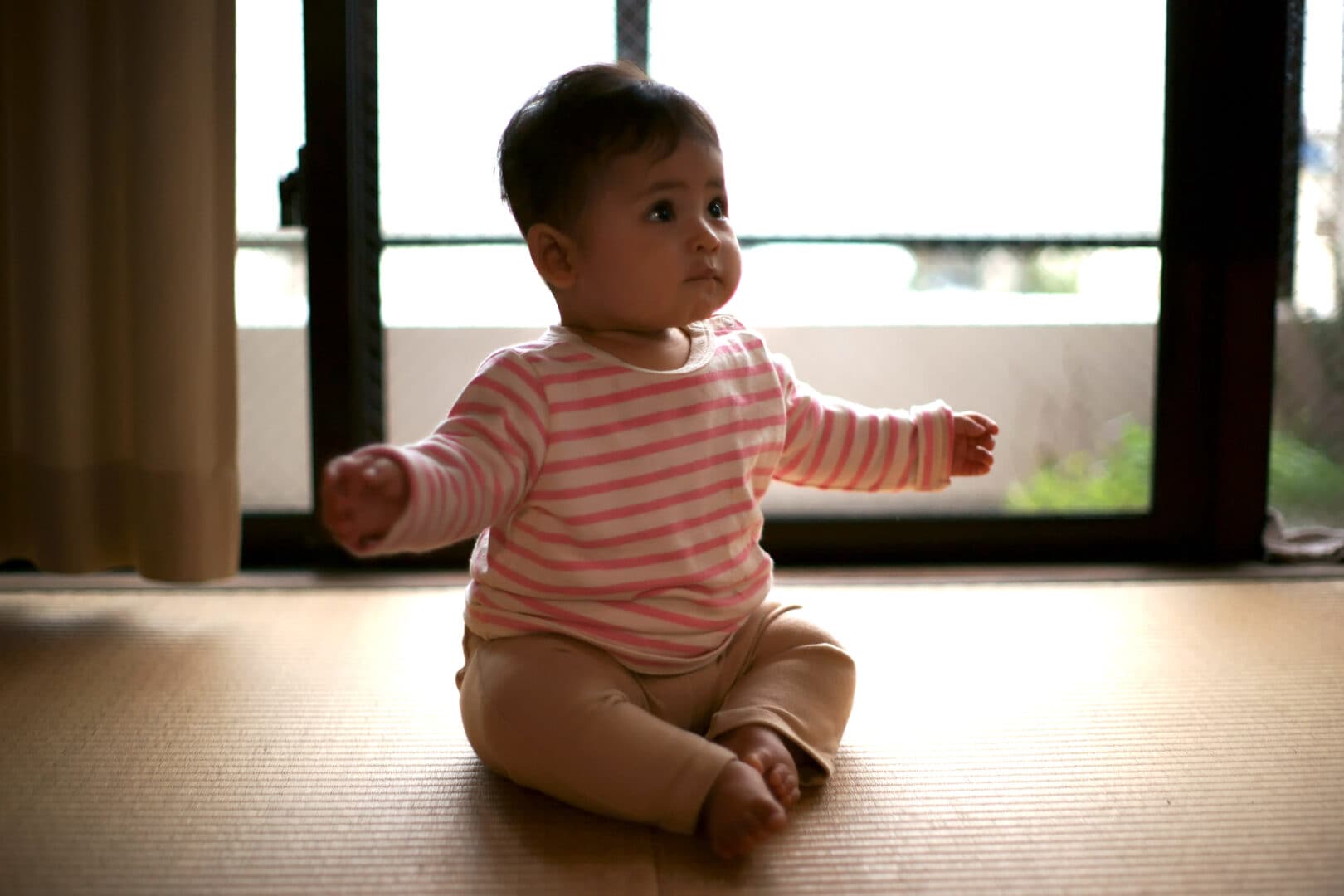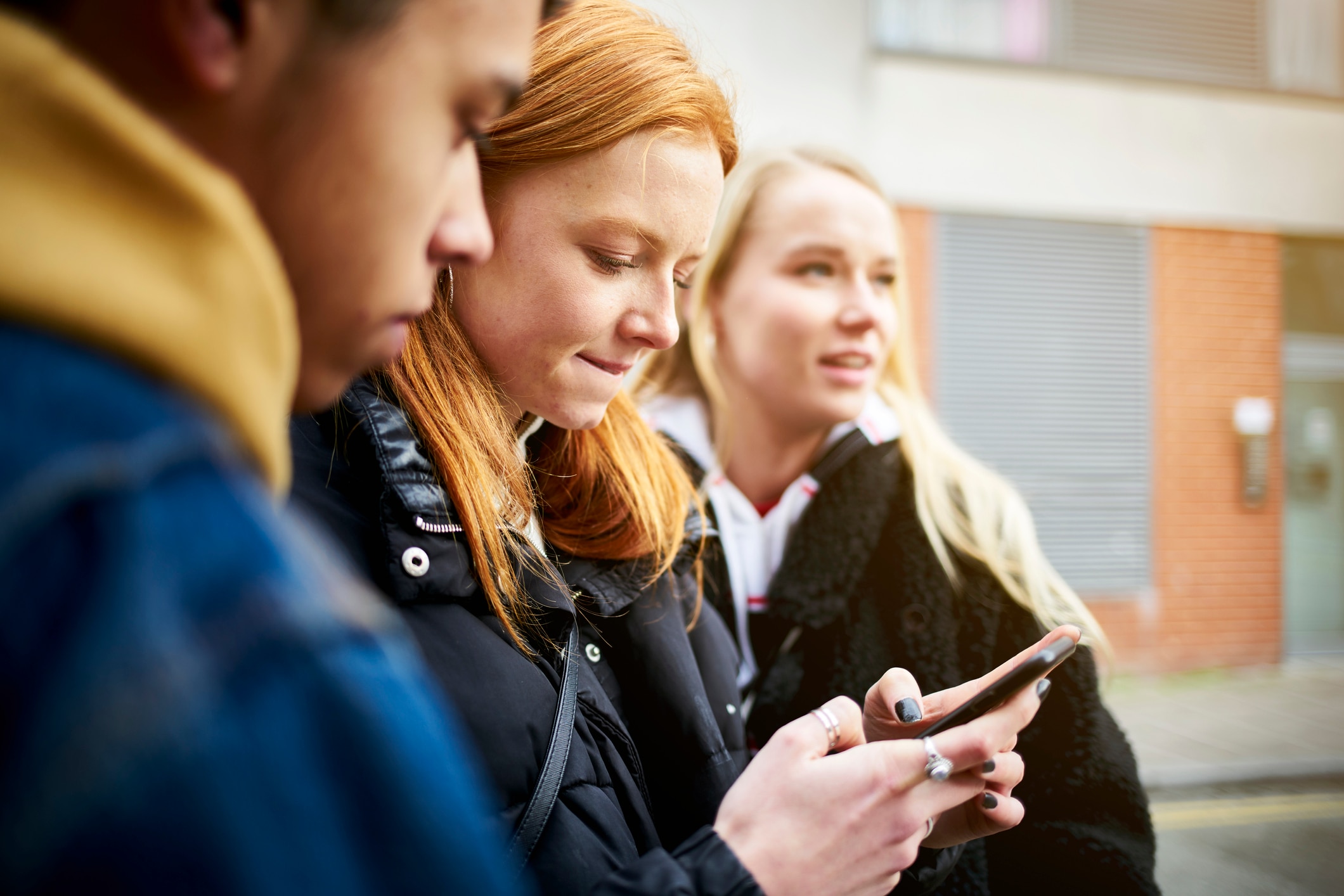Sometimes it seemingly happens overnight: One day babies are sitting and trying to reach for their toys, and the next day, they are… ON. THE. MOVE. Of course, on the move can look different from baby to baby, especially if babies choose scooting on their bottoms instead of crawling on their hands and knees as their preferred form of locomotion.
While it’s often not what their grown-ups expect, scooting on their bums is more common than people might think. “It is extremely common for babies to develop different parts of their bodies at different times,” explains Dr. Sara Siddiqui, pediatrician and clinical assistant professor in the Department of Pediatrics at NYU Langone’s Hassenfeld Children’s Hospital in New York. “Scooting — or any movement from one point to another on the floor — is extremely common. It is so common that crawling in and of itself is not considered a milestone.”
Here’s what experts say about infant scooting, what it looks like and how to support each baby’s healthy development.
What is scoot crawling and what does it look like?
Just like there are a variety of ways babies can get around, there are a variety of ways babies can scoot on their bottoms. “Essentially the child is in a seated position and uses the lower extremity in a bent and forward position to move themselves from one place to another,” describes Siddiqui, who notes that the child might use a combination of one or both legs and one or both arms. (For a visual, check out the adorable 18-second mark of this Pampers commercial.)
“Babies can scoot in all directions, but most of the time they will be scooting forward towards the toy, caregiver and object they are interested in.”
— Magdalena Oledzka, certified pediatric physical therapist
“Some kids will have both hands free and just do this kind of pelvic thrust, forward and back, to move their butts on the floor,” explains Magdalena Oledzka, certified pediatric physical therapist at the Hospital for Special Surgery in New York. “Some babies use one hand, some use two and some don’t use hands at all.”
As for what direction scooting on their tushies may take them (forward, backward and even sideways), Oledzka adds, “Babies can scoot in all directions, but most of the time they will be scooting forward towards the toy, caregiver and object they are interested in.”
“Asymmetrical scooting may be more concerning as it may indicate asymmetrical strength and a preference to use one side of the body,” Oledzka says. As always, talking to a pediatrician is the first step in assessing a child’s development.
When does a baby start scoot crawling?
Whatever their preferred form of locomotion, babies often begin moving in ways like crawling or scooting any time between 6 and 12 months, says Susan Petroski-Randolph, certified pediatric occupational therapist at the Hospital for Special Surgery in New York.
Likewise, Siddiqui notes that it’s common to see babies begin different types of movement — the army crawl, crawling, bottom scooting or shuffling — around 8 to 9 months: “It is at this time that the core strength has developed, and they can lift the stomach off the floor or move around in a sitting position as well.”
She adds that while bottom scooting does not count as crawling, it is “considered a movement that requires some coordination and strength, so it is counted as a positive development towards gross and fine motor skills.”
Of course, babies need a safe space to practice these new skills, and grown-ups need to make sure baby-proofing measures — such as gating stairs, locking cabinets, securing furniture and rounding sharp edges — are adequately put into place.
“Babies move around in the most effective way possible for them at their current level of strength and development. Sometimes lower extremities are stronger than upper extremities.”
— Dr. Sara Siddiqui, pediatrician
What causes babies to scoot crawl?
“Most babies who choose bottom scooting have to work a little harder on movement,” explains Oledzka. “That’s why they look at alternative methods of movement that don’t require as much work for them.” She adds that crawling on hands and knees is “a bit like Pilates for babies” — and often harder to achieve than bottom scooting.
“Babies move around in the most effective way possible for them at their current level of strength and development,” says Siddiqui. “Sometimes lower extremities are stronger than upper extremities, and this is where scooting can come into play.”
“Asymmetrical scooting may be more concerning as it may indicate asymmetrical strength and a preference to use one side of the body,” Oledzka says. “From my perspective as a pediatric physical therapist, I see the baby who is starting to choose butt scooting versus reciprocal crawling [on hands and knees] as a sign of weakness in the core, a little bit of a delay in the development of more mature skills in the trunk.”
She adds that these babies might just need a little help from a doctor or other specialist in figuring out how to move more efficiently on their own so that it benefits their gross and fine motor skills, strength and coordination later on.
What strength-building activities can babies be encouraged to do?
Each child develops differently and some babies might skip the crawling phase altogether or go from scooting to a more modified crawl — all of which Siddiqui explains is “completely normal.” However, there are some simple activities babies can be encouraged to do that can help with strength building.
Provide tummy time and floor activity
Experts agree that from very early on babies can benefit from plenty of tummy time and floor time activity when they are awake to encourage movement and help build muscle tone in the body.
Encourage time on all fours
Specifically introducing babies to the quadruped (hands and knees) position that they need for reciprocal crawling — even if it simply results in quadruped rocking — is often important for strength-building, says Oledzka of babies who haven’t found this position themselves. It can also help with the timely development of:
- Gross motor skills: Oledzka explains that this position helps babies build muscles that they will eventually need in order to move in other ways, such as pulling up to stand through the half-kneel position, cruising and walking.
- Fine motor skills: “When they are crawling on hands and knees, they’re strengthening their shoulders, their arms. They’re weight bearing into open hands, which helps develop the arches of the hands. It helps stretch out the ligaments of the hands into their full open position,” says Petroski-Randolph. So encouraging the quadruped position, she notes, can be beneficial in helping to develop future fine motor and graphomotor skills, like using utensils and writing legibly.
“Usually scooting is not a concern, but it is useful to watch and observe for continuous growth and development of body movements.”
— Dr. Sara Siddiqui
Minimize walker and exer-saucer time
As for what parents can avoid? “Pediatricians do not recommend walkers or assisted devices for the reason that it develops lower extremity muscle groups faster than upper extremity groups,” notes Siddiqui. Petroski-Randolph agrees: “We’re seeing a lot of babies being put in walkers and exersaucers and play gyms where they are not getting that tummy time, and that often impacts whether or not they crawl as well.”
When does infant scooting become a cause for concern?
“Usually scooting is not a concern,” explains Siddiqui, “but it is useful to watch and observe for continuous growth and development of body movements,” adding that — absent of other areas of concern or development — bottom scooting is just another form of movement.
Petroski-Randolph clearly breaks this down for worried grown-ups: “Parents of babies who bottom scoot for a few weeks and then transition to reciprocal crawling have no reasons for concern. Parents of babies who pull to stand, cruise and take their first step in the timely manner — by 15 months — have no reasons for concern. Infants who choose scooting as their only mode of mobility and show motor delays, such as not pulling to stand, standing or taking steps, are the babies that come to see us.”
Enlisting the help of a physical therapist is exactly what Jessica Schuman, a mom in St. Petersburg, Florida, did when her son — now an active 4-year-old — started scooting when he was around 1 year old. “Since this was already ‘behind the curve,’ and since he wasn’t trying to pull up or move at all, our pediatrician encouraged us to seek out medical intervention,” she recalls.
She visited a neurologist, orthopedic physician and finally a physical therapist who helped her son strengthen his leg muscles. He finally started walking about 1 month before his second birthday. “He did finally catch up and once he started walking, he never slowed down. Now he runs, jumps and hops farther, longer and faster than anyone in his age group,” she says.
Of this walking milestone, Schuman adds, “It is extremely frustrating and isolating to have a child who falls behind on a milestone as important as this one, but so long as there are no true physical barriers or neurological diagnoses, I would encourage parents not to feel disheartened.”
The bottom line: Always ask the pediatrician
If parents are concerned about their baby’s movement or development, the pediatrician is the best place to start. During an office visit, Siddiqui says she typically checks many areas of development, including overall muscle tone, strength of the upper and lower extremities, and core strength and movement.
Often, Siddiqui advises parents to increase floor time and floor activity in order to encourage other movement and increase muscle tone. However, if there are multiple areas of concern, a difference in strength in different parts of the body, delays in other areas of development, or if parents are concerned and want an assessment, she might refer patients for an occupational or physical therapy evaluation.
Of course, parents often know their babies best, and that added peace of mind from an evaluation is sometimes all moms and dads need to put any worries behind them — and keep up with their babies in whatever way they choose to move.





